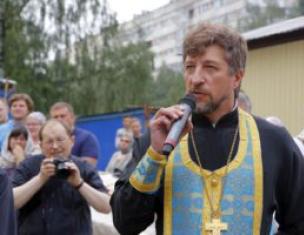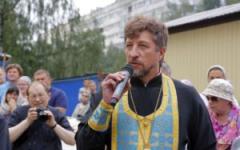Bronze bust of twice Hero of Socialist Labor Alexander Alexandrovich Morozov
(Square near the BMZ cultural center)
53°18’35″N – 34°18’25″E
Installed: 1982
Architect: P.G. Chegelnitsky
Sculptor: N. Ryabinin
Morozov Alexander Alexandrovich
Alexander Alexandrovich Morozov was born on October 29, 1904 in the city of Bezhitsa, Bryansk district, Oryol province, into a family of workers. In 1914, the family moved to Kharkov and A. A. Morozov’s father, Alexander Dmitrievich, went to work at the Kharkov Locomotive Plant (KhPZ).
Alexander Alexandrovich began his career on March 2, 1919 as a copyist of technical documents in the Technical Office of the KhPZ, and since May 1923 he has already been working as a draftsman-designer. In November 1926, Alexander Alexandrovich was called up to serve in the Red Army. He served in Kyiv, in the twentieth aviation squadron as a Red Army soldier.
In 1928, after demobilization, he returned to the plant, and on October 18, 1928 he began working in a tank design group under the leadership of the first leader of this group, I.N. Aleksenko.
At this time, Morozov took an active part in the development of the T-12 and T-24 tanks. For 2 years, without interruption from his main job, he was at the Moscow Correspondence Mechanical Institute named after. Lomonosov, and then at the mechanical technical school at KhPZ. In 1933, Alexander Alexandrovich entered the combat training sector of the Red Army House and graduated from the BT tank commander course on May 1, 1934.
This little military training had a great influence on his views as a designer of fighting vehicles. 
On July 29, 1936, Alexander Alexandrovich became head of the new design sector. In this position, he met with Mikhail Ilyich Koshkin, who in 1937 was appointed chief designer of the KhPZ tank design bureau. Mikhail Ilyich, who was well versed in people, quickly noticed Morozov and made him his deputy.
At this time, on the instructions of the Armored Directorate of the Red Army, work is underway to create a new wheeled-tracked maneuverable tank A-20. An analysis of the design of the A-20 tank showed that, in terms of basic performance characteristics, it is slightly superior to the BT-7M tank, and the design bureau, on its own initiative, is simultaneously developing a fundamentally new tracked tank, the A-32. As a result of targeted refinement of the A-32 prototype, the design bureau created a new T-34 tank, which later became the main tank of the Soviet Army during the Great Patriotic War, and was subsequently recognized as the best tank of the Second World War.
Since October 1940, after the death of M.I. Koshkin, the position of Chief Designer of the design bureau was taken by Alexander Alexandrovich Morozov. At that moment he was only 36 years old. With the beginning of the Great Patriotic War, the design bureau along with the plant was evacuated to the city of Nizhny Tagil, where tank production was organized.
In October 1941, A.A. Morozov was appointed Chief Designer of the Ural Tank Plant. In 1943, for exceptional services to the state in organizing the production, design and improvement of tanks, Morozov was awarded the title “Hero of Socialist Labor”.
The military's urgent demand to increase the tank's firepower and the hard work of the design bureau's designers led to the creation of the T-34-85 tank, capable of fighting on equal terms with the new German heavy tanks.
On January 22, 1945, Alexander Alexandrovich was awarded the military rank of Major General of the Tank Engineering Service by the Decree of the Council of People's Commissars of the USSR for the development and continuous improvement of the T-34 tank.
At the end of the war, the T-44 medium tank was created in the design bureau, under the leadership of A.A. Morozov, and after the war, the T-54 tank. For his participation in the creation of each of these tanks he was awarded State Prizes.
On November 13, 1951, Alexander Alexandrovich, by order of the Minister, was transferred to Kharkov, to his home plant, and immediately began work on creating a new, even more advanced tank. And already in October 1963, the T-64 tank was created, which was decades ahead of tank building around the world. The T-64 tank became the basic vehicle on the basis of which the T-72, T-80 and other tanks were created.
Despite his enormous workload, Alexander Alexandrovich was always active in public life: he was elected more than once as a member of district and regional party committees, and in 1976 he was elected as a delegate to the 25th Congress of the CPSU. Alexander Alexandrovich carefully prepared for any work, even the most insignificant. He took communication with employees just as seriously, always listened carefully and, to the extent possible, helped and supported in difficult situations, but did not tolerate general phrases, vague statements, vague and imprecise formulations.
In the 60s, A. A. Morozov revealed himself not only as an outstanding designer, but also as a scientist. He conducts an in-depth analysis of trends in tank design, and, based on the wealth of production experience and accumulated technical material, writes a scientific work. The Higher Attestation Commission, highly appreciating it, awarded him the academic degree of Doctor of Technical Sciences by decision of May 5, 1972.
In 1974, by Decree of the Presidium of the Supreme Soviet of the USSR, for outstanding services in the development of domestic tank building and in connection with the 70th anniversary of A.A. Morozov, he was awarded the Order of Lenin and the second Gold Medal of the Hero of Socialist Labor.
On June 4, 1976, Alexander Alexandrovich left the post of Chief Designer and Head of the Design Bureau due to health reasons. But his connection with the design bureau does not stop; for a long time he remained a consultant to the design bureau, a member of the Scientific and Technical Council of the Ministry, until his death on June 14, 1979. No matter what position Alexander Alexandrovich was in, he always and everywhere remained, first and foremost, a Designer.
He devoted more than 50 years of his life to strengthening the country's defense capability. A. A. Morozov was awarded the following high titles and awards.
In order to perpetuate the memory of Alexander Alexandrovich, the Government adopted a number of resolutions:
- his name was given to the Design Bureau, where Morozov worked for more than 50 years, 36 of which were as chief designer;
- the Kharkov Mechanical College was named after A. A. Morozov, from which he graduated among the first graduates;
- one of the streets of Kharkov (Yumtovskaya) was renamed into the street named after A.A. Morozov;
- In the city of Bryansk and at the plant where he worked, bronze busts of A.A. Morozov were installed.
In addition, the memory of Alexander Alexandrovich lives and will live in tens and hundreds of T-34 tanks installed on pedestals in many cities and modern T-64, T-72 and T-80 tanks.
Alexander Alexandrovich Morozov
My relationship with Alexander Alexandrovich Morozov was ambiguous. The reader may get the impression that the relationship between us was mainly antagonistic. There is no doubt, I have always strived to make something better, more successful, more reliable than in Morozov’s designs, often unjustifiably not accepting his decisions or plans. But for the rest of my life I have retained in my soul the memory of this outstanding personality - Designer with a capital D, being a contemporary of whom I learned a lot and understood a lot.
In this short chapter, I want to talk about what kind of person the chief designer of the Kharkov tank design bureau, Alexander Aleksandrovich Morozov, was, a bright memory of whom remained in the heart of everyone who had the good fortune to be his comrade-in-arms in the glorious deeds of Soviet tank building.
My first meeting with him took place at the end of December 1949, when we, fifteen graduates of the academy, arrived on assignment at Uralvagonzavod. He gathered us in a small room called the technical office, told us about the work awaiting us and drew on a piece of paper a chart of the designer’s creative growth. It follows from the diagram that the designer’s creative output reaches its maximum at the age of 45, from 45 to 50 it remains constant, and after 50 it decreases...
One of our comrades, apparently wanting to show his readiness for creativity, asked the question: “Alexander Alexandrovich! What do you need to have to become a candidate of technical sciences? Morozov thought and said: “You know, once a similar company got together, and the question was asked: “What do you need to have to give an enema?” One said a jar, another said water, a third said a tube, and the fourth, who turned out to be a doctor, said: “First of all, you need to have an enema object...”
– Is it now clear to you what you need to have to become a candidate of science?
“I see,” answered the questioner.
At the beginning of my work, I read in some magazine that a glue had been developed that glues everything in the world. He submitted an innovative proposal to glue the friction linings to the fan drive disk with it. In the series they were held together with rivets. The proposal was accepted for testing. The results of the tests were disastrous, and in my youth I took the failure seriously. When approving the report, Morozov reassured me, saying: “Don’t be upset. I also fell for this glue. The wife tore the cloak. I said that I would seal it with new glue. The raincoat will be like new. Everything was done using technology. He spread the cloak on the floor, glued it together, put a board on the glued area, and pressed it down with the legs of the bed. After 24 hours, he dismantled the entire structure, picked up the raincoat, handed it to his wife and said: “Wear it!” She took the cloak, pulled the glued parts with both hands, and they separated... “What should I do now?” – she asked. I cheerfully answered her: “Sew the seam on a machine and wear this raincoat for your health.”
When working on a new heater boiler, the idea arose to eliminate the water pump installed on it, which often failed. Instead, V.N. and I Benediktov came up with a special device, which they called a “steam circulator”. The essence of this proposal was as follows: in the front part of the boiler an additional compartment was made with a tube that went into the water pipe of the heater. A valve was installed between the water jacket and the compartment, through which water entered the compartment. As soon as the water in the compartment was heated to a boil, the valve automatically closed. The resulting steam entered the heater pipe and drove the coolant through the system. As soon as the water in the compartment had completely evaporated, the valve opened, the compartment was filled with water again, and everything was repeated all over again. We made a sample, tried it - it works. We decided to show it to Morozov.
We came to the nook of the workshop where the heater was being tested, started up the installation - the steam circulator was working, the coolant was being circulated in the system. Suddenly something flew upward with a whistle past Morozov’s head. Steam came out of the steam circulator. “I see,” said Morozov and left the nook. Since then, we have not worked with the steam circulator anymore.
And here's the thing. To avoid a possible explosion of the steam circulator when high steam pressure occurs, we welded a small pipe to it and inserted a wooden plug into it. This plug was wet at first, somehow held the pressure, but as soon as it dried out, it flew up...
After Morozov left Nizhny Tagil for Kharkov, we periodically met with him at various meetings in Moscow. Somehow it turned out naturally that during breaks in meetings we often found ourselves together: having lunch, relaxing. Once, after a meeting of the Ministry board, where, while reporting, I engaged in self-criticism, Alexander Alexandrovich said: “Leonid Nikolaevich! Why do you criticize yourself? There are so many deputy ministers sitting at the table, it’s their job to criticize. For this they receive 20 thousand a month.” After this conversation, I have never criticized myself in my life...
Alexander Alexandrovich organically did not tolerate officials, both civilian and military. It didn’t cost him anything to reprimand some deputy minister or general in front of everyone. The future First Deputy Chairman of the Council of Ministers of the USSR A. A. Voronin also got it from him when he was still Deputy Minister of Defense Industry.
In general, when Morozov didn’t like something, he quickly exploded, and at the same time he could insult a person. One day, the minister gathered us tank designers and said that Khrushchev wanted us to start developing a hovercraft tank. Hearing this, Morozov immediately stood up and said: “I don’t know how to say it in English, but in Russian it’s called bullshit!”
None of the designers took on this work except Zh.Ya. Kotina. Of course, nothing came of this idea.
Morozov was always correct with me and, it seems to me, fatherly, although I sometimes said things that he did not like. Somewhere in 1962, at the technical council of the Defense Equipment Committee, a tank modernization project presented by the Kharkovites was considered. Speaking at it, I said: “This project proposes to install a 115-mm cannon, which is mounted on the T-62 tank. By the time this tank is completed, the gun will be obsolete. We need to install a more promising weapon!” Morozov did not object to this speech in any way, and my proposal was included in the decision of the technical council.
In the fall of 1967, military trials of ten Kharkov tanks in Belarus ended sadly. All the main designers of tank factories were gathered. The commission was headed by Deputy Minister of Defense Industry A.I. Kritsin. We started to look into the issue of the engine. Morozov is silent. The lead designer and deputy chief designer spoke. They accused the chief designer of the engine, A.L., who was present at the meeting, of all the sins. Golinets. He did not try to make excuses and proposed a number of measures to improve engine reliability. After Golints’ speech, I asked to speak and said: “It’s in vain that tankers blame engine failures on engine mechanics. The air purification system, and more specifically, the cassetteless air cleaner, is to blame for this. It is very dangerous to operate. If at least one cyclone becomes clogged or there is an air leak in the power system, we will only know about the malfunction when the engine fails. This is what happened in Belarus. It is necessary to install either a cassette air cleaner or some kind of alarm system for a malfunction of the air supply system to the engine.” Neither Morozov nor anyone else said a word, and Golinets noticeably cheered up.
In the work of our design bureau and the Kharkov design bureau, some kind of unannounced and unadvertised creative competition arose naturally. We always went towards the same goal, but in different ways. The Kharkovites had an advantage over us, since everyone in Moscow, right up to the Central Committee, relied on them and helped them in every possible way. On the other hand, the Kharkovites had enormous difficulties, since they, without having a backlog of proven components and mechanisms, immediately decided to significantly break away from the production tank in terms of tactical and technical characteristics. We moved in separate steps, taking and quickly introducing into the production tank everything that appeared new in science and technology. They tried to interfere with us, but we had support from the Sverdlovsk Economic Council and the deputy head of the GBTU, Alexander Maksimovich Sych.
I still worry about Sych in connection with the troubles that he went through, constantly defending the people of Tagil. Not finding a reason to get rid of him in a decent way, the military bureaucrats who made up the top leadership of the GBTU at that time resorted to the meanness characteristic of that time. In the fall of 1966, Sych was sent on a business trip to Belarus. In his absence, the safe was opened, in which they found the general’s personal notebook containing notes of an allegedly secret nature. For this, General Sych was deprived of security clearance and transferred to the reserve. When Alexander Maksimovich returned from a business trip and demanded a notebook to prove the absence of secret data in it, he was told that this notebook had been destroyed...
Morozov and I have developed a good, mutually respectful relationship. Moreover, he once told me: “You make us spin with all our might with your work.”
Morozov was a gifted and courageous designer, a good organizer, a witty person and a good storyteller. Once, already working in Moscow, I came to Kharkov on a business trip. Together with the district engineer (head of military acceptance), my friend at the academy N.A. The Ladonnikovs come to Morozov. We sat and talked. It's lunch time. I say N.A. Ladonnikov: “Kolya, let’s go have lunch.” Alexander Alexandrovich immediately replied: “The generals should be fed lunch every other day.”
In March 1979 A.A. Morozov no longer worked, was ill, and almost never left the house. I once again came on a business trip to Kharkov. On the day of departure I called him at home and offered to meet for about fifteen minutes. Alexander Alexandrovich responded with pleasure. He suffered from severe asthma attacks and was out of breath, but always tried to joke. Instead of a quarter of an hour, we talked for about two hours, and I almost missed the train.
In everyday life, Alexander Alexandrovich was a very modest person and personally was embarrassed to ask for anything. Unfortunately, this character trait extended to his attitude towards his subordinates. It was not in his nature to actively help them with housing issues or other similar requests that required the “punching power” of the boss.
At the end of July 1962, I managed to go on vacation. My wife insisted that the whole family go to Sochi. We agreed on this on one condition: I would not stand in line at the canteen and other food places. And so, on the very first morning of our stay in Sochi, my wife and daughter stood in line at a children’s cafe, and I sat down at an open table. Suddenly someone behind me taps me on the shoulder. I look around - Morozov. It turns out that the day before he also arrived in Sochi with his wife and granddaughter. They stopped not far from us. We spent three weeks together on the beach, went to lunch together at the Primorsky restaurant, and drank a bottle of dry wine every day. During this time there was a lot of talk, but, oddly enough, not a word was said about work by either me or him. I once asked him: “Alexander Alexandrovich, you are now a deputy of the Supreme Soviet of the USSR, but you came to rest as a savage. Was it really impossible to organize a trip?” Morozov replied: “I don’t want to ask, to humiliate myself...”
I remember one of his stories related to being a deputy. Once, having received a call to Moscow, he asked his eldest son to give him a ride to the station. We arrived at the station, stopped and began to say goodbye. A traffic police inspector comes up and says that parking is prohibited, and for violation there is a fine of five rubles. Morozov objected, saying that the rules were not violated, since they only stopped and did not stand. The inspector insisted on a fine. To get rid of it, Morozov handed the inspector a five. He took the money and headed away. Alexander Alexandrovich stopped him and demanded a receipt. Here the inspector takes some piece of paper out of his pocket, tears it into two parts and, throwing it at Morozov’s feet, says: “Here’s your receipt!” Morozov, presenting his deputy ID, demands that the brute pick up the papers. The policeman did not dare to disobey, he bent down and blushed, collecting the papers. And curious people have already gathered around, they look and do not understand what is happening: a healthy, red-faced peace officer, bent obsequiously, stands in front of a bald, inconspicuous-looking, tiny man and collects pieces of paper...
One day Morozov and I decided to weigh ourselves on the beach. They paid a penny. We weighed ourselves. My weight turned out to be 65 kg, and his – 56 kg... I said then:
“Look, even the numbers are the same, although they are arranged in reverse order.”
It seems to me that Morozov was tormented by one circumstance all his life: he did not want to share the glory of creating the T-34 tank with the former chief designer M.I. Koshkin. And here's what I can give to confirm this. By 1967, the name of Koshkin, as the creator of the T-34 tank, gradually disappeared from the pages of newspapers and reports dedicated to Tanker Day, etc. The first name was Morozov, then Kucherenko, although the latter joined this work only in 1939, when the T-34 tank was already put into mass production.
And so in June 1967, in two issues of Komsomolskaya Pravda, a truthful account of the role of M.I. Koshkin in the creation of the T-34 tank. This article, in particular, described in detail the journey of two tanks from Kharkov to Moscow and their showing in the Kremlin to members of the Politburo of the Party Central Committee.
After reading this publication, I wrote a letter to Komsomolskaya Pravda, in which I asked the editors to organize a fundraiser for a monument to Koshkin. I motivated this as follows: “Koshkin is the creator of the T-34 tank, but soon after its creation he died. If Koshkin had been alive, he would undoubtedly have been recognized with government awards, ensuring the construction of the monument at public expense. Due to his premature death, he lost this. There are many monuments to the T-34 tank throughout Europe. Let there be another monument to its chief designer, built with public money.”
After this letter, the Komsomolskaya Pravda correspondent who wrote this article came to Nizhny Tagil and interviewed all former Kharkov residents. At his request, they wrote their memoirs. In his last conversation with me, the correspondent promised to organize a fundraiser for the monument. After Nizhny Tagil, the correspondent went to Kharkov. When he came to Morozov, he told him: “Neither I nor any of my employees can tell anything about Koshkin.”
The correspondent did not fulfill his promise to raise funds for the monument, but in Kharkov he found M.I.’s widow. Koshkina. She lived in the same house with Morozov, only in different entrances. Her apartment was in disrepair. The correspondent went to the Kharkov City Executive Committee and got her apartment repaired at public expense. This action of the authorities turned out to be the only monument to the famous designer of the famous “thirty-four” at that time. And at least some benefit came from my letter to the newspaper...
From the book The Court and Reign of Paul I. Portraits, Memoirs author Golovkin Fedor GavriilovichChapter IV Count Alexander Alexandrovich Golovkin - “philosopher”. - He is an original, but a good one. - Stay in Monnas and Lausanne. - Society in Lausanne. - Wife of Count Alexandra, later Duchess of Noailles. - The Count accepts the offer of Frederick II of Prussia and
From the book Diary of A. A. Lyubishchev for 1918-1922. author Lyubishchev Alexander AlexandrovichAlexander Alexandrovich Lyubishchev Diary
From the book Memories author Likhachev Dmitry SergeevichAlexander Alexandrovich Meyer In the spring of 1929, Alexander Alexandrovich Meyer and Ksenia Anatolievna Polovtseva appeared on Solovki. A. A. Meyer had a ten-year sentence - the highest at that time, but with which his sentence to death was “mercifully” replaced, taking into account his
From the book The Story of My Life. Volume 2 authorAlexander Alexandrovich Bedryaga After the release of Alexander Nikolaevich Kolosov, Alexander Alexandrovich Bedryaga began to manage Krimkab. I remember him as I remember him now. He had a narrow balding head tapering upward, a mustache, beautiful sly eyes, a small mouth and
From the book The Story of My Life. Volume 1 author Morozov Nikolay AlexandrovichNikolai Aleksandrovich Morozov Stories of my life Volume 2 N. A.
From the book Tula - Heroes of the Soviet Union author Apollonova A. M.Nikolai Aleksandrovich Morozov Tales of My Life Volume 1 PREFACE N. A. Morozov (mid-70s) This edition of “Tales of My Life” by an outstanding Russian scientist in the field of natural science, the oldest revolutionary, honorary member of the USSR Academy of Sciences
From the book Silver Age. Portrait gallery of cultural heroes of the turn of the 19th–20th centuries. Volume 1. A-I author Fokin Pavel EvgenievichDemidov Alexander Alexandrovich Born in 1915 in the village of Poltevo, Chernsky district, Tula region, into a peasant family. After graduating from primary school, he worked on a collective farm, then at the construction of the Bobrikovsky chemical plant, at sawmill No. 2 in the Kirov region. On
From the book Silver Age. Portrait gallery of cultural heroes of the turn of the 19th–20th centuries. Volume 2. K-R author Fokin Pavel Evgenievich From the book Notes. From the history of the Russian foreign policy department, 1914–1920. Book 1. author Mikhailovsky Georgy Nikolaevich From the author's bookKISEVETTER Alexander Alexandrovich 10(22).8.1866 – 9.1.1933Historian, publicist, public figure, author of memoirs. Privat-docent at Moscow University (1903–1911). Member of the Central Committee of the Cadet Party. Member of “Wednesday” N. Teleshova. Publications in the magazines “Russian Thought”, “Russian Wealth”,
From the author's bookCONGE Alexander Alexandrovich 28.5 (9.6).1891 – 17.7.1916 Poet. Publications in the magazines “Gaudeamus”, “Northern Notes”, “Free Journal”. Poetry collection “Captive Voices. Poems by A. Konge and M. Dolinov" (St. Petersburg, 1912). Killed at the front. “A. A. Konge, a young student, amazed with his elemental power
From the author's bookMIROPOLSKY Alexander Alexandrovich present fam. Lang, pseudo. A. Berezin;1872–1917Translator, prose writer, poet. Publications in the 2nd collection “Russian Symbolists” (Moscow, 1894), in the almanacs “Northern Flowers”, “Vulture”, in the magazine “Rebus”. Poetic books “Lonely Labor” (M., 1899), “Witch.
From the author's bookMOROZOV Nikolai Alexandrovich 25.6 (7.7).1854 – 30.7.1946Poet, scientist, memoirist. Narodovolets, in 1882 was sentenced to life imprisonment, which he served first in the Peter and Paul Fortress, and from 1884 in Shlisselburg. In conclusion, he wrote 26 volumes of works of various genres,
From the author's bookOSmerKIN Alexander Alexandrovich 11.26 (12.8).1892 – 6.25.1953Painter, theater artist, teacher. Member of the group of artists “Jack of Diamonds”, participant in exhibitions of the association “World of Art” (1916–1917). “He was a young, impetuous man, always on the move... Always,
From the author's bookROSTISLAVOV Alexander Alexandrovich 1860–1920 Artist, art critic. Employee of the magazine "Theater and Art". Publications in magazines and newspapers “World of Art”, “Rech”, etc. “Now, after a long time, I can honestly admit that Rostislavov
From the author's bookAlexander Alexandrovich Polovtsov A.A. Polovtsov was not a stranger either to our department or to Petrograd society. The son of a famous dignitary, a personal friend of Alexander II and Alexander III, he, as a young officer of the Horse Guards Regiment, became famous in his time
- (1904 79) Russian designer, major general engineer (1945), Doctor of Technical Sciences (1972), twice Hero of Socialist Labor (1943, 1974). Under the leadership of Morozov, light tanks BT 2, BT 5, BT 7, etc. were created. Participant in the development of medium... ... Big Encyclopedic Dictionary
Morozov Alexander Alexandrovich- [R. 16(29).10.1904, Bezhitsa, now Bryansk region], Soviet tank designer, Major General of Technical Service (1943), Doctor of Technical Sciences (1972), Hero of Socialist Labor (1942). Member of the CPSU since 1943. In 1931 he graduated from mechanical engineering... ... Great Soviet Encyclopedia
Morozov Alexander Alexandrovich- (1904 1979), designer, major general engineer (1945), Doctor of Technical Sciences (1972), Hero of Socialist Labor (1943, 1974). Under the leadership of Morozov, light tanks BT 2, BT 5, BT 7, etc. were created. Participant in the development of the medium tank T 34, etc. ... encyclopedic Dictionary
Morozov, Alexander Alexandrovich- Genus. 1904, d. 1979. Designer, creator of military equipment (light tanks BT 2, BT 5, BT 7, medium tank T 34, etc.). Three times laureate of the USSR State Prize (1942, 1946, 1948), laureate of the Lenin Prize (1967). Twice Hero of the Socialist... ... Large biographical encyclopedia
Morozov, Stanislav Alexandrovich- Wikipedia has articles about other people with the same surname, see Morozov. Stanislav Morozov ... Wikipedia
Morozov, Mikhail Alexandrovich- Wikipedia has articles about other people named Morozov, Mikhail. Mikhail Morozov Birth name Mikhail Alexandrovich Morozov Date of birth May 7, 1972 (1972 05 07) (40 years old) ... Wikipedia
Morozov, Alexander- Wikipedia has articles about other people with the same surname, see Morozov. Alexander Morozov: Morozov, Alexander Alekseevich (1973) humorist from “The Crooked Mirror” Morozov, Alexander (dubbing actor) (1974) voice actor. Morozov, Alexander ... Wikipedia
On October 16, 1904, one of the most talented designers of the USSR, Alexander Alexandrovich Morozov, was born. He lived for 75 years and devoted almost two-thirds of his life to tanks. Having started as a draftsman and copyist at the Kharkov plant, he then worked at the same enterprise as a simple designer, head of a section, and head of a design bureau. Morozov was not at the front, but the tanks, in the development of which he took part, fought from the first day of the war until the Victory.
After 1945, he continued to design vehicles that set the tone for Soviet tank building at that time. Below are brief histories of ten tanks that can be called iconic in the legacy of the outstanding designer.
A. A. Morozov. Historical reference
Alexander Alexandrovich Morozov was born on October 16, 1904 in the village of Bezhitsa, which is now located within the city of Bryansk. After graduating from a real school (an educational institution in which the main role was given to natural sciences and mathematics), he worked at the Kharkov Locomotive Plant. He was a clerk, draftsman, and copyist. From 1926 to 1928 he served in the army as an aviation mechanic mechanic.
Since 1928, he worked as a designer at the Kharkov Locomotive Plant. It should be noted that this enterprise, despite its “peaceful” name, was in fact one of the key Soviet factories producing military vehicles, including tanks.
After graduating from the mechanical engineering college in 1931, A. Morozov became a group leader in the plant’s design bureau, and in 1936 - head of the sector. In 1938, he was appointed to the position of deputy chief designer.
In the pre-war period, he took part in the development of the T-24 tank and the BT series of wheeled and tracked vehicles. Together with Mikhail Koshkin and Nikolai Kucherenko, he worked on the future “workhorse” of the armored forces of the Red Army - the T-34 medium tank.
After Koshkin's death at the end of 1940, Morozov became the chief designer of the design bureau of the Kharkov plant. In 1941, the plant was evacuated to Nizhny Tagil. Under the leadership of Alexander Morozov, work was carried out on the T-43, T-34-85, T-44, T-54 tanks.
In the post-war years, Alexander Morozov created such famous combat vehicles as the T-55, T-64 and T-64A.
For the development of the T-54 medium tank, Alexander Morozov was awarded the USSR State Prize for the third time. Twice he was awarded the title of Hero of Socialist Labor. Twice he became a laureate of the Stalin Prize, 1st degree. In 1972, Alexander Morozov received his Doctor of Technical Sciences degree.
Tanks and people. Diary of the chief designer
Time, how unusual your run is.
In childhood, you are a small stream,
imperceptibly, gaining strength.
In youth - a quiet river, with
steady flow, but
with its rapids and whirlpools.
In old age - a raging mountain
a stream that carries you into an unknown ocean...
Time is impossible in front of you
Only human memory can survive,
yes saved archives can be abandoned
a challenge to you, calling for objectivity and justice...
(V. Chernyshev)
Preface
Without stopping for a second, humanity writes its History, turning days into pages, years into chapters, centuries into volumes. To pass on the accumulated experience to the next generation, to warn against mistakes made, to leave your mark in specific cases is his main goal.
The twentieth century is a thing of the past, having absorbed wars, revolutions and disasters, behind which stood millions and millions of human lives.
Having entered the 21st century, the older generation, looking back, notices with surprise that many events and facts to which it was directly related have been forgotten, distorted, and represent large blank spots for posterity. One of these blemishes of our History is the development of Soviet tank building: its rise in the 30s and decline in the 90s.
The Second World War revealed three undisputed leaders: the USA - the aviation and nuclear industry, Germany - rocket science, the USSR - tank building.
The Soviet Union won a leading position in the world tank building by creating the legendary T-34 tank, which was easy to manufacture, reliable in operation, and unsurpassed in technical characteristics.
The combat use of the T-34 and its mass production in difficult military conditions provided a lot of practical material that was used in the creation of subsequent T-44 and T-54 tanks.
The creation and adoption of the T-64 was the beginning of the second post-war generation of tanks and strengthened the understanding of the military and the developers of leading design bureaus about the place and tasks of tanks in a nuclear missile war. Armored formations were and remain the striking force of the ground forces.
The modernization of the T-64 tank, the use of its technologies and components in the creation of the T-72 and T-80 allowed the USSR to maintain its world leadership until the mid-70s of the twentieth century.
Since the late 70s, the situation has slowly begun to change. The Leopard-2 tank was developed and put into service in Germany, and the Abrams tank in the USA. A slow but unstoppable rollback began. International exhibitions of weapons and military equipment, Pakistani, Turkish and Greek tank tenders of the late 90s each time more and more confirmed this trend...
The driving force behind the development of Soviet tank building was the struggle between two industrial centers - Leningrad and Kharkov, which in a narrow circle were called “Northern” and “Southern”.
At the beginning of the 30s of the last century, the “Northern” group included the following plants: Izhora, im. CM. Kirov (No. 185), named after. K.E. Voroshilov and Bolshevik. The core of “Southern” was the Kharkov plant named after. Comintern (No. 183) and the Mariupol Armor Plant.
The general management of the “Southern” was carried out by the Deputy Chairman of the Council of People’s Commissars V.A. Malyshev.
I.V. Stalin personally oversaw the tank program of the USSR and the appointment of the young, ambitious director of the Leningrad Bolshevik plant, Dmitry Fedorovich Ustinov, to the post of Minister of Armaments of the USSR was not accidental. It secured his position as the de facto leader of the “Northern” and was a counterweight to V.A. Malyshev.
However, there were also other forces that were not capable of creating tanks, but shaped the opinion of the country's top leadership - these were the defense department of the CPSU Central Committee, the military-industrial commission under the Council of Ministers of the USSR and the Main Armored Directorate of the Ministry of Defense.
The confrontation between the “Northern” and “Southern” continued until the 25th Congress of the CPSU (March 1976).
– “Northern” have strengthened for a long time. Now we have neither help nor support,” this was said by congress delegate A.A. Morozov after arriving from Moscow in a narrow circle of like-minded people. He was an excellent analyst and understood well: the election of the Chief Designer of the T-80 tank N.S. Popov Member of the Audit Commission of the CPSU Central Committee - this is just the beginning...
In April 1976, with an interval of three days, the Chief of Staff of the United Armed Forces of the Warsaw Pact countries, Army General S.M., died. Shtemenko and USSR Minister of Defense A.A. Grechko. Funeral of A.A. Grechko and the appointment in his place of the Secretary of the CPSU Central Committee for Defense Issues Dmitry Fedorovich Ustinov took place on the same day - April 29, 1976...
From September 1940 to June 1976, the leading tank design bureau in the USSR at the Kharkov plant No. 183, later the Malyshev Plant, was headed by A.A. Morozov. He finds himself in the very center of the events under consideration, gaining access to the most current and reliable information not only on tank building, but also related industries, including rocketry and radio electronics.
Many of the participants in these events are no longer alive, but their close relatives and colleagues remain, who have preserved their archives and memories of this extraordinary person, his ability to work, organize a team, bear personal responsibility for the assigned work and bring it to the end.
Chief Designer A.A. remained unhurried, careful and demanding. Morozov is remembered by his colleagues who called him Grandfather behind his back. He was remembered as stubborn, tough and unpredictable by his opponents and adversaries, who feared the appearance of something unusual that did not fit into the normal understanding, but which was impossible to resist.
A.A. Morozov is one of the few Chief Designers of weapons systems who realized the harmfulness of long-term modernization. It slowed down the pace of technology development, allowed competitors to create analogues with similar tactical and technical characteristics, and dragged in like a swamp, from which it became impossible to get out of over time. Ahead of their opponents by two or three steps, at the cost of superhuman efforts they made a sharp leap forward to a qualitatively new level, maintaining their leadership and setting new standards for world tank building. It was the M.I. school. Koshkina. To her A.A. Morozov always remained faithful. This is how the basic tanks T-34, T-44, T-54, T-64 appeared. They always had the number 4. The appearance of each of them was marked by the award of the State or Lenin Prize.
The latest development by A.A. Morozov - a preliminary design of the T-74 tank of the 80s (product "450") was considered at the board of the Ministry of Defense Industry on May 26, 1972. It was this weapon system, according to the plans of the Chief Designer, that could and should have resisted tanks "Leopard-2" and "Abrams" that have not yet appeared...
The passing of this man had a great influence on the course of world tank building. Germany has abandoned promising work on the Leopard 3 tank. The United States curtailed work on the modernization of the Abrams tank (Block-1, Block-2 and Block-3 programs), concentrated its resources on aerospace technology and high-precision weapons, proving to the world its leadership in Kuwait, Yugoslavia, Afghanistan and Iraq...
The proposed book is based on the personal archive of Alexander Alexandrovich Morozov, documentary materials provided by the management of the Kharkov “Malyshev Plant” and the A.A. KMDB. Morozova.
The publication of this book would have been impossible without the help and support of Morozova I.A., veterans and employees of the “Malyshev Plant” Stepanenko V.K., Kisterny Yu.I., director of the factory museum Bystrichenko A.V., Nemtseva G.A. (St. Petersburg) and many, many others.
The author expresses special gratitude to the veterans of the tank forces, Major General Yu.F. Kutenkov, and the representative of the VP-85 military acceptance, Colonel V.G. Sarychev. and the Chief Designer of Engines N.K. Ryazantsev, who showed the need for the book and gave strength to complete it.
Chapter 1. Farewell to the Urals
It's been a year since Kharkov was liberated. A decision was made to re-evacuate the Kolomna steam locomotive plant, plant No. 38 (Kirov) and our engine plant No. 75 (Chelyabinsk) to Kharkov. We are staying in Tagil. How long will this last? We agreed with Maksarev not to interfere with the return of Kharkov residents home.
Plant No. 183 presented a project for a new T-54 tank to the NKTP.









